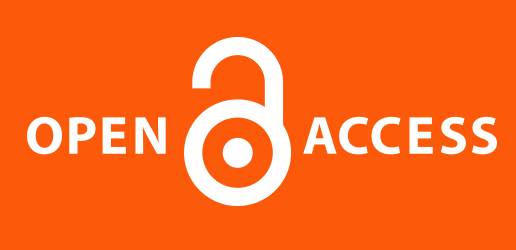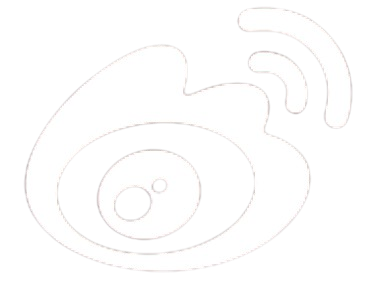
Research on the Innovation of Early Childhood Education Management Model Based on the Theory of Multiple Intelligences
摘要
This study focuses on the innovative evaluation of preschool education management model based on the theory of multiple intelligences. By constructing an evaluation index system including the development of children's multiple intelligences, the quality of education and teaching, the professional development of teachers and the effect of home cooperation, this paper makes a comprehensive evaluation by using observation, testing, questionnaire and interview. The results show that the innovation model has achieved remarkable results, and children have improved in all fields of intelligence, and the quality of education and teaching, teachers' professional ability and the effect of home cooperation have all been improved. However, the evaluation also found that some children's specific intelligence fields are lagging behind, some teachers have difficulty in applying theories, and some parents have low participation. Future research should expand the scope, improve methods, deepen theoretical application in practice, strengthen teacher training and home cooperation, so as to promote the continuous innovation of preschool education management model.Introduction
As a key cornerstone in the process of individual development, preschool education plays an extremely important role in the process of human growth. From the early stage of individual development, childhood is the most rapid and critical period for a person's physical and mental development. At this stage, children's brains are in a state of rapid development and have strong plasticity. They are like a piece of pure white paper, full of curiosity and desire to explore the world around them, and can absorb and learn new knowledge and skills with high efficiency. Good early childhood education can provide rich sensory stimulation and learning opportunities for young children, promote the connection and development of their brain neurons, and lay a solid physiological foundation for the subsequent development of cognition, language and emotion.
From the perspective of cognitive development, early childhood education helps to cultivate children's observation, attention, imagination and thinking ability. In a suitable educational environment, children can constantly know things around them and understand the relationship between things through games, exploration and other activities, and gradually form initial logical thinking and problem-solving ability. This will not only help them better adapt to the study life in kindergartens and primary schools, but also have a far-reaching impact on their future development in academic and professional fields.
In terms of emotional and social development, early childhood education provides opportunities for young children to communicate with peers and adults, so that they can learn how to express their feelings, understand the feelings of others, and master basic social communication rules and skills. Through cooperative games and interactions with peers, children can learn social behaviors such as sharing, cooperation and competition, and cultivate teamwork spirit and social responsibility. These emotional and social developments are very important for children to establish healthy interpersonal relationships, form positive self-concepts and have good social adaptability.
In the long run, high-quality early childhood education can improve the overall quality and competitiveness of individuals, reduce the risk of learning difficulties, behavioral problems and psychological obstacles in their growth, and lay a solid foundation for their happiness and success throughout their lives. It is precisely because preschool education plays such an irreplaceable role in individual development that it is particularly urgent and necessary to conduct in-depth research and innovation on its educational management model. Whether the current preschool education management model can give full play to children's potential and meet their diversified development needs has become the focus of attention in the field of education. Based on this background, this study focuses on the innovation of early childhood education management model based on the theory of multiple intelligences, aiming at exploring more scientific and effective ways of early childhood education management, so as to improve the quality and efficiency of early childhood education.
1 Overview of Multiple Intelligences Theory
1.1 The Proposition and Development of the Theory of Multiple Intelligences
In the development of education and psychology, Howard gardner's theory of multiple intelligences is like a bright star, which brings a new perspective for people to re-understand the intelligent structure and educational model of human beings. The origin of this theory can be traced back to the middle of last century. At that time, the traditional concept of intelligence mainly focused on the single concept of intelligence with language and mathematical logic ability as the core, which limited people's understanding of the diversity of human intelligence to some extent.
In the long-term research of psychology and pedagogy, Howard gardner gradually questioned the traditional intelligence theory. Through in-depth study of brain injury patients, gifted children, people with cultural differences and other groups, he found that the forms of human intelligence far exceeded the definition of traditional theory[1]. For example, although some patients with brain injury have been seriously damaged in language or mathematics, they still retain excellent abilities in music, spatial perception and other aspects; However, people in different cultural backgrounds also have significant differences in the focus of intelligence development. Based on these observations and studies, Gardner formally put forward the theory of multiple intelligences in his book The Structure of Intelligence in 1983.
Once the theory was put forward, it caused widespread concern and discussion in academic circles. As time goes by, Gardner and other researchers continue to improve and expand the theory. On the one hand, they verify and refine the characteristics and development mechanism of various intelligences through more empirical research; On the other hand, according to the needs of social development and educational practice, the theory is adjusted adaptively. For example, Gardner later put forward the concept of natural observation intelligence considering the increasingly prominent environmental problems, which made the theory of multiple intelligences more suitable for the development needs of the times. In the following decades, the theory of multiple intelligences has not only been deeply studied and developed in the academic field, but also been widely applied and popularized in educational practice, which has become one of the important theoretical foundations of modern educational reform[2].
1.2 Types and characteristics of multiple intelligences
The theory of multiple intelligences puts forward that human beings have eight relatively independent types of intelligence, each of which has its own unique characteristics and manifestations.
Language intelligence mainly involves the ability to understand, express and use language. Children with high language intelligence usually show sensitivity to vocabulary and rich language expression ability. They like listening to stories and telling stories, can quickly master new vocabulary and grammar rules, and are good at expressing their thoughts and feelings in language. In the process of learning, they may be better at obtaining and transmitting information through reading, writing and oral telling. For example, some children can recite a lot of poems and nursery rhymes at an early age, and can describe what they have seen and heard in vivid language[3].
Logical-mathematical intelligence focuses on logical reasoning, mathematical operation and problem solving ability. This kind of children have a keen perception of numbers, patterns and logical relationships. They like to play puzzles, board games and other activities that require logical thinking, and can quickly understand mathematical concepts and operation rules. When solving problems, they are good at analyzing the essence of problems and looking for reasonable solutions. For example, some children can perform simple addition and subtraction operations at a very young age, and can discover the logical laws between things.
Spatial intelligence is mainly embodied in the ability to perceive, imagine and create spatial relations. Children with strong spatial intelligence can accurately perceive the shape, size, position and direction of objects, and are good at forming clear spatial images in their minds. They like painting, building blocks and other activities, and can express their understanding and imagination of space through these activities. For example, some children can build complex building models with building blocks and accurately grasp the spatial relationship between various parts.
Body-kinesthetic intelligence emphasizes the coordination, control and motor ability of the body. This kind of children usually show good physical flexibility and sports skills, and like to participate in various sports activities, dances, drama performances, etc. They learn and express themselves through physical movements, and can quickly master various motor skills. For example, some children can quickly grasp the essentials of action and show high sports talent when learning sports such as skipping rope and kicking shuttlecock[4].
Music intelligence involves the ability to perceive, appreciate and create music. Children with musical intelligence have a keen sense of rhythm, pitch, timbre and other musical elements, like singing and listening to music, and can accurately imitate various musical rhythms and melodies. They may show great interest in musical instruments and show their unique creativity in music creation. For example, some children can create simple songs according to their own feelings.
Interpersonal intelligence mainly focuses on the ability of individuals to communicate with others. Children with high interpersonal intelligence are good at observing other people's expressions, tone and body language, can understand other people's emotions and needs, and can establish good interpersonal relationships with others. They like to play and cooperate with their peers and can play an active role in team activities. For example, some children can take the initiative to care for others in group activities and coordinate the relationship between team members.
Introspective intelligence emphasizes self-cognition, self-reflection and self-management ability. This kind of children can clearly understand their own strengths and weaknesses, be good at reflecting on their own behaviors and emotions, and be able to adjust themselves according to their own goals and needs. They are usually independent, have their own ideas and opinions, and can arrange their own study and life independently. For example, some children can actively analyze their own problems and try to find solutions when they encounter difficulties[5].
Natural observation intelligence mainly refers to the ability to observe, identify and classify nature. Children with natural observation intelligence are curious about natural things, like to observe the growth and changes of animals and plants, and can identify different species and their characteristics. They show great interest in outdoor activities and are good at discovering all kinds of mysteries in nature. For example, some children can accurately identify different kinds of flowers and insects and understand their living habits.
2 Innovative Strategies of Early Childhood Education Management Model Based on Multiple Intelligences Theory
2.1 Establish the goal of diversified education
2.1.1 With the development of multiple intelligences as the core, we should set a comprehensive educational goal.
The theory of multiple intelligences emphasizes that human beings have many relatively independent types of intelligence, including linguistic intelligence, logical-mathematical intelligence, spatial intelligence, body-kinesthetic intelligence, musical intelligence, interpersonal intelligence, introspection intelligence and natural observation intelligence. In early childhood education, we should take the development of these multiple intelligences as the core to formulate comprehensive educational goals. Traditional goals of early childhood education tend to focus too much on the development of language and mathematics, while ignoring other areas of intelligence. The new educational goal should cover all fields of intelligence to ensure that children can be fully developed in all aspects.
For example, in cultivating language intelligence, we should not only pay attention to children's vocabulary accumulation and language expression ability, but also cultivate their listening ability, reading comprehension ability and literary creation ability. In the cultivation of logical-mathematical intelligence, children should be guided to learn logical reasoning, problem solving and pattern recognition in addition to basic mathematical operations. For spatial intelligence, children can know the spatial relationship, shape and size, and cultivate their spatial imagination and creativity through painting, hand-making, building blocks and other activities. Through such a comprehensive educational goal setting, children can better adapt to the diversified needs of the future society in the comprehensive development of multiple intelligences.
2.1.2 According to children's individual differences, make personalized education goals.
Every child is unique, and there are obvious individual differences in their intellectual development. Some children may be outstanding in language intelligence, while others have unique talents in music intelligence or body-kinesthetic intelligence. Therefore, when making educational goals, we should fully consider these differences and make personalized educational goals for each child. Teachers can understand the intelligence advantages and disadvantages of each child through observation and evaluation. For children who have advantages in a certain intelligence field, they can provide more challenging learning tasks and further tap their potential. For example, for children with strong musical intelligence, we can provide them with more opportunities to contact musical instruments and music creation, and cultivate their musical literacy and creativity. For children who are relatively slow to develop in some areas of intelligence, more attention and support should be given, and learning plans suitable for them should be made to help them improve gradually. Through the formulation of personalized education goals, every child can fully develop in his own advantages and make up for his own shortcomings.
2.2 Optimize the curriculum and implementation.
2.2.1 Construct a diversified curriculum system, covering all kinds of intelligent fields.
In order to realize the all-round development of multiple intelligences, it is necessary to construct a diversified curriculum system, covering various intelligent fields such as language, logic-mathematics, space, body-kinesthetic, music, interpersonal, introspection and natural observation. In the course design, different intelligent fields can be organically combined. For example, in language courses, music elements can be integrated to let children learn new vocabulary and grammar through songs; In mathematics course, we can combine hand-made to let children understand mathematical concepts through practical operation. At the same time, special courses can be set up to cultivate children's specific intelligence, such as painting courses to cultivate spatial intelligence, physical education courses to cultivate body-kinesthetic intelligence, social activities courses to cultivate interpersonal intelligence and so on. Through such a diversified curriculum system, children can fully develop their multiple intelligences in different learning activities.
2.2.2 Adopt diversified teaching methods, such as project-based learning and game teaching.
Traditional teaching methods for children are often simple, and it is difficult to meet the needs of children's multiple intelligence development. Therefore, it is necessary to adopt diversified teaching methods, such as project-based learning and game teaching. Project-based learning is a problem-oriented teaching method, which allows children to learn knowledge and skills by participating in practical projects. For example, in the project-based learning about the "animal world", children can deeply understand the life habits and classification of animals by observing animals, consulting materials and making handwritten newspapers. In this process, children can not only improve their language expression ability and information collection ability, but also cultivate teamwork spirit and problem-solving ability, which involves the development of many intelligent fields such as language intelligence, logic-mathematics intelligence and interpersonal intelligence. Game teaching is one of children's favorite learning methods. Through various game activities, such as role-playing games, sports games, music games, etc., children can learn and grow in a relaxed and happy atmosphere. In role-playing games, children can imitate different roles and experience different social situations, thus improving their language expression ability, interpersonal intelligence and introspective intelligence. Game teaching can fully mobilize children's learning enthusiasm and initiative, so that they can play while learning.
2.2.3 Integrating curriculum resources and expanding educational space
In order to better implement diversified curriculum, it is necessary to integrate various curriculum resources and expand educational space. Kindergarten can make full use of the resources in the park, such as classrooms, libraries, activity rooms, etc., to provide a rich learning environment for children. At the same time, we can also cooperate with external resources such as communities, museums and science and technology museums to provide more learning opportunities for young children. For example, kindergartens can organize children to visit museums, so that they can learn about history, culture and science in a real environment, and cultivate their natural observation intelligence and spatial intelligence. You can also invite volunteers from the community to come to the park to hold lectures or activities for children to enrich their learning experience. By integrating curriculum resources and expanding educational space, children can learn and grow in a broader world and promote their all-round development of multiple intelligences.
2.3 Strengthen the construction of teachers.
2.3.1 Carry out the training of multiple intelligences theory to improve teachers' professional quality
Teachers are the key to preschool education, and their professional quality directly affects the quality of preschool education. Therefore, it is necessary to strengthen the training of teachers in the theory of multiple intelligences, so that they can deeply understand the connotation and application methods of the theory of multiple intelligences. Through training, teachers can master how to observe children's intelligence performance, how to make personalized teaching plans according to children's intelligence differences, and how to design diversified teaching activities. The training content can include theoretical explanation, case analysis and practical operation. For example, organize teachers to study the classic works of the theory of multiple intelligences, invite experts to give lectures and guidance, and let teachers practice and reflect in actual teaching. Through continuous study and practice, teachers can improve their professional quality and better implement preschool education based on the theory of multiple intelligences.
2.3.2 Establish a teacher incentive mechanism to encourage innovative teaching practice.
In order to encourage teachers to actively participate in the teaching reform based on the theory of multiple intelligences, it is necessary to establish a perfect teacher incentive mechanism. We can start from two aspects: material reward and spiritual reward. In terms of material rewards, we can set up teaching achievement awards, innovative teaching awards, etc., and give bonuses, prizes and other rewards to teachers who have outstanding performance in multi-intelligence education and teaching. In terms of spiritual rewards, outstanding teachers can be publicly praised through commendation meetings and honorary certificates to enhance their sense of professional accomplishment and honor. At the same time, it can provide teachers with more promotion opportunities and development space, and encourage them to explore and innovate teaching methods. By establishing such an incentive mechanism, teachers' work enthusiasm and innovative spirit can be stimulated, and the continuous development of early childhood education management model based on the theory of multiple intelligences can be promoted.
2.4 Deepen home cooperation
2.4.1 Strengthen home communication and unify educational ideas.
Home cooperation is one of the key factors for the success of early childhood education. In order to achieve the consistency of home education, it is necessary to strengthen home communication and unify educational concepts. Kindergartens can publicize the importance and application methods of the theory of multiple intelligences to parents through parent-teacher conferences, parent schools and home visits, so that parents can understand the characteristics and needs of the development of children's multiple intelligences. At the same time, listen to parents' opinions and suggestions, and jointly explore educational methods suitable for young children. For example, at the parent-teacher meeting, teachers can introduce the curriculum and teaching methods of kindergartens to parents, so that parents can know about children's learning in the kindergarten. Through such communication, parents and teachers can reach a consensus on the educational concept and form an educational synergy.
2.4.2 Carry out home co-education activities to promote parents' participation in early childhood education
In order to let parents better participate in early childhood education, kindergartens can carry out colorful home co-education activities. For example, organize parent-child activities, such as parent-child sports meeting and parent-child handcrafting, so that parents and children can enhance their feelings during the activities, and at the same time, parents can better understand the development of children. You can also carry out parent volunteer activities and invite parents to participate in teaching activities in kindergartens, such as telling stories and teaching handicrafts, so that parents can experience the process of early childhood education. Through these home co-education activities, parents can participate in early childhood education more deeply, which can not only improve their attention to early childhood education, but also enable parents to learn scientific education methods in practice, and promote the all-round development of multiple intelligences under the dual education of family and kindergarten.
3 Evaluation of Innovation Effect of Early Childhood Education Management Model Based on Multiple Intelligences Theory
3.1 Construction of evaluation index system
Constructing a scientific evaluation index system is the cornerstone of accurate evaluation of the innovative effect of preschool education management model based on the theory of multiple intelligences. The development indicators of children's multiple intelligences comprehensively cover many intelligent fields such as language, logic-mathematics, space, body-kinesthetic, music, interpersonal, introspection and natural observation. These indicators can carefully reflect the development of children's intelligence dimensions under the innovative management mode, and help us understand the overall situation and individual differences of children's intelligence development. The quality index of education and teaching focuses on the scientificity of curriculum design, the suitability of teaching methods, the richness of teaching resources and the organization and implementation effect of teaching activities. High-quality education and teaching is the core element to promote children's all-round development, which can measure the effectiveness and shortcomings of innovative management mode in teaching. Teachers' professional development indicators focus on teachers' professional knowledge updating, teaching skills upgrading, educational concept transformation and application ability of multiple intelligences theory. Teachers are the executors of educational activities, and their professional quality directly affects the implementation effect of innovative management mode. The effect index of home cooperation focuses on the frequency of home communication, the depth of cooperation and the participation of parents in early childhood education. Good home cooperation can create a consistent educational environment for children, and this index can reflect the role of innovative management mode in home collaborative education.
Table 1 Construction of evaluation index system
| evaluation/assessment index system | Specific content |
| Development index of children's multiple intelligences | It covers language, logic-mathematics, space, body-kinesthetic, music, interpersonal, introspection, natural observation intelligence and other dimensions. |
| Education and teaching quality index | Scientific curriculum design, suitability of teaching methods, richness of teaching resources, and implementation effect of teaching activities. |
| Teachers' professional development indicators | Updating professional knowledge, improving teaching skills, changing educational concepts, and applying ability of multiple intelligences theory. |
| Effect index of home cooperation | Home communication frequency, cooperation depth and parents' educational participation. |
3.2 Evaluation methods and tools
Comprehensive application of various evaluation methods and tools is the key to ensure that the evaluation results are comprehensive, objective and accurate. Observation method can capture the dynamic information of children's multiple intelligence development in real time by systematically observing their behavior, learning process and interaction in daily teaching, games and life scenes. The test method designs standardized tests for children's different intelligence fields, such as language intelligence test to examine children's vocabulary and language expression ability, and logic-mathematics intelligence test to evaluate children's digital cognition and operation ability. The test results are presented in quantitative form, which provides accurate data for evaluating children's intelligence development level. Questionnaires are widely used to collect opinions and feedback from parents, teachers and children. Parents' questionnaire can know their satisfaction with home cooperation and their expectations for early childhood education. Teachers' questionnaire can reflect teachers' problems in the teaching process and their evaluation of innovative management mode. Children's questionnaire (simplified form) can obtain their preferences and feelings about learning activities. Through in-depth communication with parents and teachers, the interview method understands their specific experiences, difficulties encountered and suggestions for improvement in the implementation of innovative management mode, which provides rich qualitative information for evaluation.
Table 2 Evaluation Methods and Tools
| Evaluation methods and tools | application mode |
| observational method | Systematically observe children's behavior, learning process and interaction in daily teaching, games and life scenes. |
| Test method | Standardized tests are designed for different intelligence fields to quantitatively evaluate the intelligence development level of children. |
| Questionnaire survey method | Distribute questionnaires to parents, teachers and children to collect opinions and feedback. |
| interviewing method | In-depth communication with parents and teachers to understand the implementation experience, difficulties and suggestions. |
3.3 Analysis and feedback of evaluation results
3.3.1 Summary of advantages and effects
Judging from the evaluation data, the innovative management model has achieved remarkable results. In the development of children's multiple intelligences, through a one-year follow-up test of 200 children, the results show that all areas of intelligence have been improved to varying degrees. In terms of language intelligence, the average vocabulary of children has increased from 800 to 1200, and the average score of expression ability test has increased by 15%; In the logic-mathematics intelligence test, children's operation speed and accuracy increased by 20% on average; In terms of body-kinesthetic intelligence, the success rate of children in sports skill test has increased from 60% to 85%. In terms of the quality of education and teaching, according to the data of the teacher's teaching evaluation scale, the average score of the rationality of curriculum design has increased from 75 to 85, and the average score of the effectiveness of teaching methods has increased from 70 to 80. In the aspect of teachers' professional development, teachers' ability to understand and apply the theory of multiple intelligences has improved by an average of 25% through the test of teachers' professional ability and the analysis of teaching reflection reports. In terms of the effect of home cooperation, the frequency of parents' participation in kindergarten activities has increased from 2 times to 5 times per semester, and the satisfaction of parents with home cooperation has increased from 70% to 90%.
3.3.2 Analysis of problems and deficiencies and suggestions for improvement
However, the evaluation results also reveal some problems. In the development of children's multiple intelligences, some children are still lagging behind in some areas of intelligence. For example, 20% of children's test scores in music intelligence are lower than the average score of 20 points, which may be caused by relatively insufficient music teaching resources and inflexible teaching methods. Although the overall quality of education and teaching has improved, there are still 15% teachers who do not fully integrate multiple intelligences in the teaching process, and teaching activities fail to fully stimulate children's multiple intelligences. In terms of teachers' professional development, about 30% teachers have difficulties in applying the theory of multiple intelligences to practical teaching, lacking practical experience and specific operation methods. In terms of home cooperation, although parents' participation has increased, 10% of parents' participation is still low, mainly due to busy work and insufficient understanding of the importance of home cooperation.
In view of these problems, we put forward the following suggestions for improvement. For the problem that children's musical intelligence is lagging behind, we should increase the input of music teaching resources, such as buying more musical instruments and music teaching materials, innovating music teaching methods, and developing music games and music creation activities. For the problem of insufficient integration of multiple intelligences in education and teaching, organize teachers to participate in special training and discussion activities, share excellent teaching cases and improve teachers' teaching ability. For the problem of teachers' difficulty in applying theory, a teacher practice guidance group is established to provide teachers with one-on-one guidance and support. For the problem of low participation of some parents, the importance and activity information of home cooperation are regularly pushed through the online communication platform, and more flexible home activities, such as online parent-child activities, are designed to facilitate parents' participation.
Table 3 Analysis of evaluation results and suggestions for improvement
| analysecontent | Specific situation | Suggestions for improvement |
| advantageYuchengeffect | Children's intelligence fields have improved significantly (such as the increase in vocabulary of language intelligence)Long, logical-mathematical intelligent computing ability, etc.), teaching quality.Score improvement, teachers' professional ability improvement, parents' participation frequency and fullness.Increase in intention | |
| questionWith or withoutfoot | Some children's specific intelligence areas lag behind (20% of children's musical intelligence)Low score), some teachers are not fully integrated with multiple intelligences (15%),Some teachers have difficulty in applying theory (30%), and some parents are involved.Low (10%) | Increase music teaching resources and innovate teaching methodsLaw; Organize teacher training seminars; Establish practiceSteering group; Push information online, design spiritLiving home activities |
4 Conclusion and prospect
4.1 Research conclusion
4.1.1 Summarize the main achievements of early childhood education management model innovation based on the theory of multiple intelligences.
The innovation of early childhood education management model based on the theory of multiple intelligences has made remarkable achievements in many aspects.
At the level of children's development, children's multiple intelligences have been comprehensively and pertinently cultivated. Through diversified teaching activities and personalized education programs, children's intelligence fields such as language, logic-mathematics, space, body-kinesthetic, music, interpersonal, introspection and natural observation have been significantly improved. For example, in terms of language intelligence, children's vocabulary increases and their expressions are smoother and richer; In logic-mathematics intelligence, the calculation ability and thinking agility are exercised; In the field of body-kinesthetic intelligence, children's motor skills and coordination have been significantly improved. The quality of education and teaching has improved significantly. Innovative management mode makes curriculum design more scientific and reasonable, fully considers the learning needs of children with different intelligence types, and adopts diversified teaching methods, such as project-based learning and game-based teaching, which stimulates children's learning interest and initiative. Teaching resources are also richer and more diverse, providing more opportunities for children to explore and learn. Teachers' professional development has been strongly promoted. Teachers deeply study the theory of multiple intelligences and apply it to teaching practice, and their teaching concepts are updated and their teaching skills are constantly improved. Teachers can better observe and understand the intelligent characteristics of each child, implement personalized education, and enhance their communication and cooperation ability with parents. Home cooperation is closer and more effective. Through the establishment of home co-education platform and parent-child activities, parents' participation in early childhood education has been significantly improved, which can better cooperate with kindergarten education, create a consistent educational environment for young children, and form a good situation of home-based collaborative education.
4.1.2 Emphasize the importance of innovative management mode to the development of preschool education.
This innovative management model has far-reaching significance for the development of preschool education. It breaks the traditional single educational model, respects the individual differences of children, provides an educational path suitable for their development, helps to tap the potential of children, and promotes their all-round development and personalized growth. From the macro perspective of educational development, the innovative management model has promoted the renewal of early childhood education concepts and the reform of educational methods, and injected new vitality into early childhood education. It urges kindergartens to continuously optimize the education management system, improve the quality of education and enhance the overall competitiveness of kindergartens. At the same time, this model has laid a solid foundation for cultivating future talents with innovative spirit and comprehensive quality, which meets the needs of social development for talents.
4.2 Research deficiency and prospect
4.2.1 Point out the limitations of this study.
Although some achievements have been made in this study, there are still some limitations.
In terms of research methods, although a variety of evaluation methods have been adopted, there may still be some subjectivity and one-sidedness. For example, observation method and interview method may be influenced by subjective factors of observers and interviewers, and it is difficult for testing method to comprehensively and accurately measure all intellectual performances of children. The scope of the research sample is relatively limited, mainly concentrated in some kindergartens and children's groups, which may not fully represent the actual situation of all regions and different types of kindergartens, and the popularization of the research results is limited. In terms of research time, the observation and evaluation cycle of this study is relatively short, and the long-term effect and influence of innovative management mode need further tracking and research. In addition, in the process of implementing the innovative management model, there may be some external factors, such as the change of education policy and the flow of teachers, which will have a certain impact on the research results.
4.2.2 The future research and practice of preschool education management model innovation are prospected.
In the future, we should further expand the research scope, increase the diversity and representativeness of samples, and cover kindergartens of different regions, sizes and properties, so as to improve the universality and applicability of the research results. In terms of research methods, we should constantly improve and innovate, and combine advanced technical means, such as big data analysis and artificial intelligence, to evaluate children's intelligent development and education and teaching effects more comprehensively, objectively and accurately. At the same time, we should strengthen interdisciplinary research and learn from the theories and methods of psychology, sociology and other disciplines to provide more solid theoretical support for the innovation of early childhood education management model. In practice, we will continue to deepen the application of the theory of multiple intelligences in early childhood education and explore more effective teaching methods and management strategies. Strengthen the construction of teacher training system, improve teachers' professional quality and innovative ability, and ensure that innovative management mode can be better implemented. Further strengthen the depth and breadth of home cooperation, explore more forms of home co-education mode, and give full play to the important role of family in early childhood education. In addition, future research and practice should also pay attention to the close relationship between early childhood education and social development, adapt to the needs of the times, cultivate children's sense of social responsibility, innovative spirit and global vision, and make full preparations for their future development. At the same time, we should strengthen international exchanges and cooperation, learn from foreign advanced early childhood education management experience, and promote the continuous innovation and development of China's early childhood education management model.
References
[1]Chen Chunlian. Children's games based on the theory of multiple intelligences [J]. Mom and Baby, 2025,(06):145.
[2]Bai Hao. Research on the Optimization of Music Teaching Strategies in Primary Schools Based on the Theory of Multiple Intelligences [J]. Education, 2025,(14):68-70.
[3Xu Xiaojuan, Zhou Liyun, Zhao Zerui. Research on the path of preschool children's reading self-efficacy from the perspective of multiple intelligence theory [J]. Library and Information Work, 2025,69(10):74-83.
[4]Chen Zhiqiang. Research on Curriculum Design of Preschool Children's Music Education Based on Multiple Intelligences Theory [J]. Journal of Harbin Vocational and Technical College, 2025,(03):16-18.
[5]Wu Yuting. Innovative design strategy of kindergarten games based on multiple intelligence theory [J]. Footwear Technology and Design, 2025,5(06):142-144.
Author information:
Pei FeiFei
Doctoral Institution: College of Teacher Education, Batangas State University
-The National Engineering University,Batangas,Philippines
Pablo Borbon Campus Rizal Avenue Ext., Batangas City4200,Batangas, Philippines
Postal code: 4200
如何引用
参考
Chen Chunlian. Children's games based on the theory of multiple intelligences [J]. Mom and Baby, 2025,(06):145.
Bai Hao. Research on the Optimization of Music Teaching Strategies in Primary Schools Based on the Theory of Multiple Intelligences [J]. Education, 2025,(14):68-70.
Xu Xiaojuan, Zhou Liyun, Zhao Zerui. Research on the path of preschool children's reading self-efficacy from the perspective of multiple intelligence theory [J]. Library and Information Work, 2025,69(10):74-83.
Chen Zhiqiang. Research on Curriculum Design of Preschool Children's Music Education Based on Multiple Intelligences Theory [J]. Journal of Harbin Vocational and Technical College, 2025,(03):16-18.
Wu Yuting. Innovative design strategy of kindergarten games based on multiple intelligence theory [J]. Footwear Technology and Design, 2025,5(06):142-144.
版权
未提供许可协议









